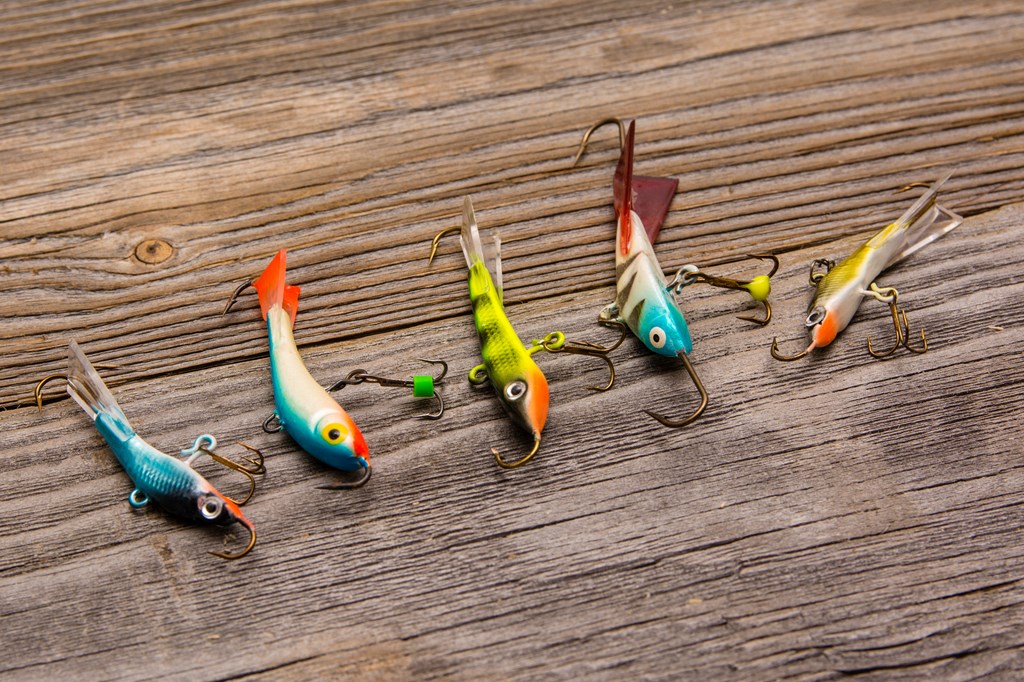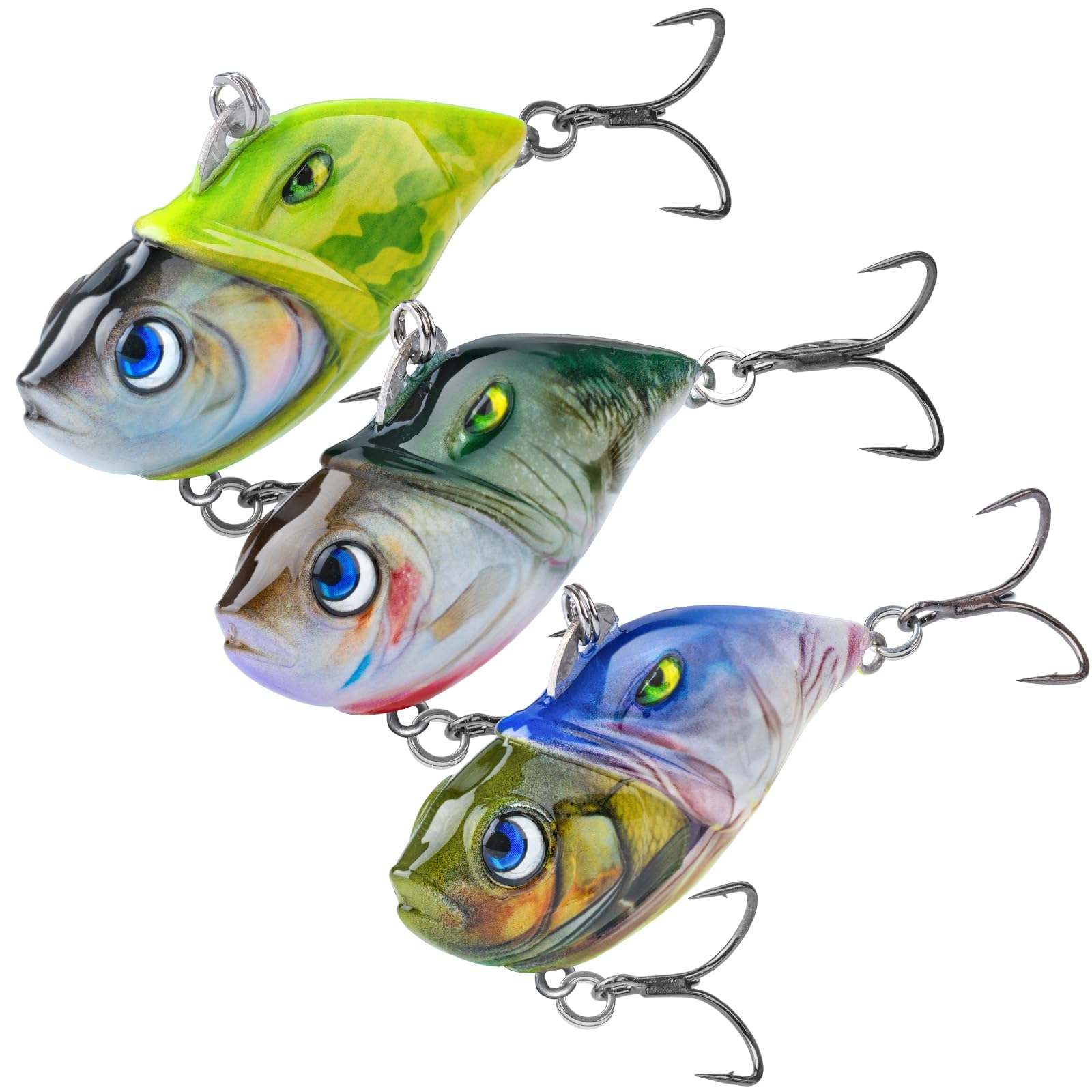Seasonal Best Bass Lures Strategies: Catch More Fish All Year
Check out the Secrets Behind Efficient Bass Lures to Enhance Your Angling Experience
Comprehending the complexities of bass Lures can greatly influence fishing success. Different Lures offer distinct functions, from crankbaits created for wide coverage to jigs that target specific structures. The effectiveness of these Lures usually depends upon factors such as color, movement, and seasonal patterns. By grasping these components, anglers can open a much more fulfilling experience. Yet, the concern continues to be: which techniques will produce the very best outcomes on the water?
Comprehending Bass Actions and Habitat
Comprehending the habits and environment of bass is vital for anglers seeking success on the water. Bass are functional fish discovered in various freshwater environments, consisting of lakes, rivers, and ponds. They have a tendency to prefer areas with structure, such as submerged rocks, fallen trees, and aquatic greenery, which give shelter and searching premises.
Seasonal patterns substantially influence their actions; in warmer months, bass often occupy superficial waters, while they pull away to deeper areas throughout colder seasons. Bass Fishing Lures. Their feeding behaviors are opportunistic, with a diet consisting generally of smaller sized fish, pests, and shellfishes
Time of day additionally contributes; bass are extra energetic during mornings and late evenings. Weather problems can influence their behavior as well, as overcast days might encourage shallow feeding, whereas intense sunshine usually drives them to seek cover. Identifying these patterns equips fishermens with the knowledge required for efficient fishing strategies.
Sorts Of Bass Lures and Their Utilizes
A selection of bass Lures are essential devices for anglers aiming to attract this preferred video game fish. These Lures can be categorized right into several types, each serving distinctive functions. Crankbaits, designed to simulate the swimming activity of baitfish, work for covering large areas promptly. Spinnerbaits, including rotating blades, create resonances and flashes that can attract bass hiding in cover. Jigs, with their heavy heads and weedless design, are optimal for bottom angling, enabling anglers to present bait near structures where bass commonly lurk. Soft plastics, such as worms and animal lures, provide convenience and can be rigged in several methods to adapt to varying problems. Topwater appeals, like poppers and frogs, are best used throughout low-light hours when bass are actively preying on the surface. Each type of appeal plays an important role in improving angling experiences and raising the possibility of successful catches.

Color and Style: What Brings In Bass?
What aspects affect bass tourist attraction to particular attraction colors and designs? The interplay of light, water clarity, and the all-natural atmosphere plays a vital duty. Brilliant colors, such as chartreuse and orange, can capture a bass's eye in murky waters, while a lot more subdued tones like blues and environment-friendlies might master clear conditions.
Layout elements, consisting of form and activity, likewise significantly effect bass destination. Lures that simulate all-natural target, such as baitfish or crawfish, are especially reliable. Additionally, the visibility of reasonable details, like fins or ranges, boosts the natural appearance, more enticing bass.
Mental factors, such as a bass's feeding routines and territorial instincts, should not be overlooked. In specific situations, bold designs can provoke a reaction from aggressive bass, while subtle variations can attract extra cautious fish. Ultimately, understanding design and color subtleties is vital for maximizing attraction performance.
Matching Lures to Water Issues
Choosing the best appeal includes greater than simply design and color; water conditions play a significant duty in determining one of the most effective choices. Aspects such as water clarity, depth, and temperature straight affect bass behavior and their feeding patterns. In clear water, natural colors and subtle discussions tend to be a lot more efficient, while murky conditions may ask for brighter, much more dynamic Lures that can attract interest.
Temperature level additionally impacts bass activity; throughout warmer months, faster-moving Lures can elicit strikes, whereas cooler temperature levels may need slower, much more calculated presentations. Additionally, deeper waters typically require much heavier Lures that can reach the desired depth, while superficial locations are better matched for lighter, surface-oriented alternatives.
Methods for Effective Lure Presentation
Understanding the strategies for efficient attraction presentation can significantly improve fishing success. Fishermens ought to concentrate on the speed and rhythm of their retrieves, adapting them to imitate the all-natural motion of target. A stable recover jobs well for many attractions, but incorporating look at here stops briefly can cause strikes from much more mindful fish. Furthermore, differing the depth of the appeal is important; utilizing various spreading angles and changing the reel can aid target fish at different midsts.
Utilizing a combination of skill discussions, such as twitching or dragging the attraction throughout all-time low, can additionally be effective. It is crucial for anglers to check out the water and readjust their strategies based upon presence and framework. Offering Lures near cover, like submerged rocks or greenery, usually generates better results, as bass have a tendency to look for sanctuary. Eventually, trying out various techniques will cause a much more satisfying angling experience.
Seasonal Factors To Consider for Draw Option
Seasonal modifications substantially affect bass habits and appeal performance. As water temperatures fluctuate, anglers should change their attraction selections to align with pre-spawning and post-spawn conditions. Understanding these seasonal patterns can enhance fishing success by targeting bass at their most active times.
Seasonal Water Temperature Level Impacts
As water temperature levels vary throughout the year, bass actions and feeding patterns alter, influencing the effectiveness of various lures. During colder months, bass often tend to come to be inactive, preferring slow-moving Lures that simulate having a hard time victim. On the other hand, as temperature levels climb in springtime, bass end up being much more active, making faster, extra hostile Lures efficient. Mid-summer sees bass seeking deeper, cooler waters, necessitating using Lures that can get to these midsts. As temperatures begin to decrease in loss, bass usually feed greatly to prepare for winter season, making versatile Lures that can mimic a selection of forage kinds linked here especially effective. Comprehending these seasonal temperature effects permits fishermens to choose suitable Lures that straighten with bass actions, maximizing their fishing success.
Pre-Spawning Draw Choices
What factors affect the choice of Lures throughout the pre-spawning period for bass? Anglers have to take into consideration water temperature, climate conditions, and the bass's feeding habits. As temperature levels increase and days extend, bass end up being extra energetic and hostile, motivating a shift in their feeding patterns. Throughout this time around, tempts that simulate the natural victim of bass-- such as shad or bluegill-- are particularly reliable. Popular options consist of spinnerbaits, lipless crankbaits, and jigs, which can be fished at different midsts. Additionally, anglers need to concentrate on locations with cover, such as submerged plants or rocky structures, as these spots often attract pre-spawn bass. Bass Lures. Recognizing these aspects can substantially enhance the possibilities of an effective angling trip during this vital seasonal stage
Post-Spawn Techniques Adjustments
Post-spawn bass show different behaviors than during the pre-spawn stage, reliable lure choice continues to be critical for anglers aiming to target them efficiently. After generating, bass usually come to be inactive and look for deeper waters, making it necessary to adjust appeal choices accordingly. Anglers must take into consideration making use of slower-moving lures, such as jigs or soft plastics, which can tempt bass that are much less hostile. Crankbaits with a subtle action can additionally work, permitting a slower presentation that mimics the natural post-spawn forage. Furthermore, angling near framework, such as immersed plant life or rocks, can raise chances of success. By understanding these seasonal modifications, fishermens can improve their fishing experience and enhance their catch rates throughout the post-spawn period.
Frequently Asked Inquiries
Exactly how Do I Select the Right Pole for Bass Fishing?
To choose the appropriate rod for bass angling, one ought to think about the rod's size, activity, and power. A medium to medium-heavy rod, around More Info 6 to 7 feet, is typically excellent for convenience and control.

What Is the most effective Time of Day to Catch Bass?
The ideal time of day to catch bass is commonly early morning and late afternoon. Throughout these periods, bass are extra active, feeding near the surface, making them simpler targets for fishermens utilizing effective attractions.
Exactly How Do Weather Impact Bass Fishing Success?
Climate condition considerably affect bass angling success. Warmer temperature levels and cloudy skies commonly urge bass task, while cold snaps can cause lethargy. Rain can additionally improve feeding habits, making it important for fishermens to adapt their strategies as necessary.
Can I Use Lures for Various Other Fish Variety?
Yes, tempts made for bass can likewise work for various other fish varieties. Picking the appropriate dimension, color, and action according to the target types and their feeding habits stays crucial for success.
What Are Typical Errors When Utilizing Bass Lures?
Common mistakes when utilizing bass Lures include choosing inappropriate dimensions or shades, fetching too promptly, stopping working to adapt to weather conditions, and ruling out water depth. These errors can significantly decrease the opportunities of an effective catch.
As water temperature levels rise and fall throughout the year, bass actions and feeding patterns transform, influencing the efficiency of different attractions. Mid-summer sees bass looking for deeper, cooler waters, requiring the use of Lures that can get to these midsts. Post-spawn bass exhibit various actions than throughout the pre-spawn stage, efficient appeal selection remains important for fishermens intending to target them effectively. After spawning, bass often end up being sluggish and seek much deeper waters, making it essential to readjust attraction selections as necessary. Common mistakes when making use of bass Lures consist of choosing unacceptable sizes or shades, obtaining also quickly, stopping working to adjust to weather conditions, and not taking into consideration water depth.